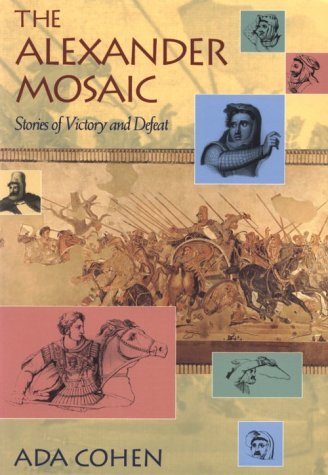The Alexander Mosaic: Stories of Victory and Defeat (Cambridge Studies in Classical Art and Iconography) - Tapa blanda

Sinopsis
A study of the richest, most complex and visually stunning monuments of classical antiquity.
"Sinopsis" puede pertenecer a otra edición de este libro.
Críticas
'This is a rich, subtle, well-researched, fair, and often convincing study ... [It] is essential reading for any serious student of Greek art in general and the Alexander Mosaic in particular.' American Journal of Archaeology
Reseña del editor
This book focuses on one of the richest, most complex and visually stunning monuments of classical antiquity. Contributing to a vast tradition of scholarship, which dates back to the discovery of the Mosaic in 1831, Ada Cohen here engages with, but departs from, a core of positivist assumptions that characterize this body of literature. In this study, she examines the Mosaic as it may have functioned in two different contexts, first as a Greek painting of the fourth century BC, and then as a Roman mosaic of c. 100 BC. A variety of interpretive issues regarding history and art history are examined, suggesting broader implications for the study of ancient monuments.
"Sobre este título" puede pertenecer a otra edición de este libro.
Otras ediciones populares con el mismo título
Resultados de la búsqueda para The Alexander Mosaic: Stories of Victory and Defeat...
The Alexander Mosaic: Stories of Victory and Defeat (Cambridge Studies in Classical Art and Iconography)
Librería: Black Cat Books, Shelter Island, NY, Estados Unidos de America
Soft cover. Condición: Very Good. Paperback. Nº de ref. del artículo: 97662
Comprar usado
Cantidad disponible: 1 disponibles
The Alexander Mosaic: Stories of Victory and Defeat
Librería: The Anthropologists Closet, Des Moines, IA, Estados Unidos de America
Paperback. Condición: Like new. Near fine softcover in printed wraps with sun fading to spine. 4to. (7.25 x 0.75 x 10 inches) Clean text free of marks or underlining. Includes list of abbreviations, notes, bibliography and an index. 302 pp. Fast shipping in a secure book box mailer with tracking. The Alexander Mosaic: Stories of Victory and Defeat focuses on one of the richest, most complex and visually stunning monuments of classical antiquity. Contributing to a vast tradition of scholarship, which dates back to the discovery of the Mosaic in 1831, Ada Cohen here engages with, but departs from, a core of positivist assumptions that characterize this literature. In this study, she examines the Mosaic as it may have functioned in two different contexts, first as a Greek painting of the fourth century B.C., and then as a Roman mosaic of ca. 100 B.C. Nº de ref. del artículo: 202537
Comprar usado
Cantidad disponible: 1 disponibles

